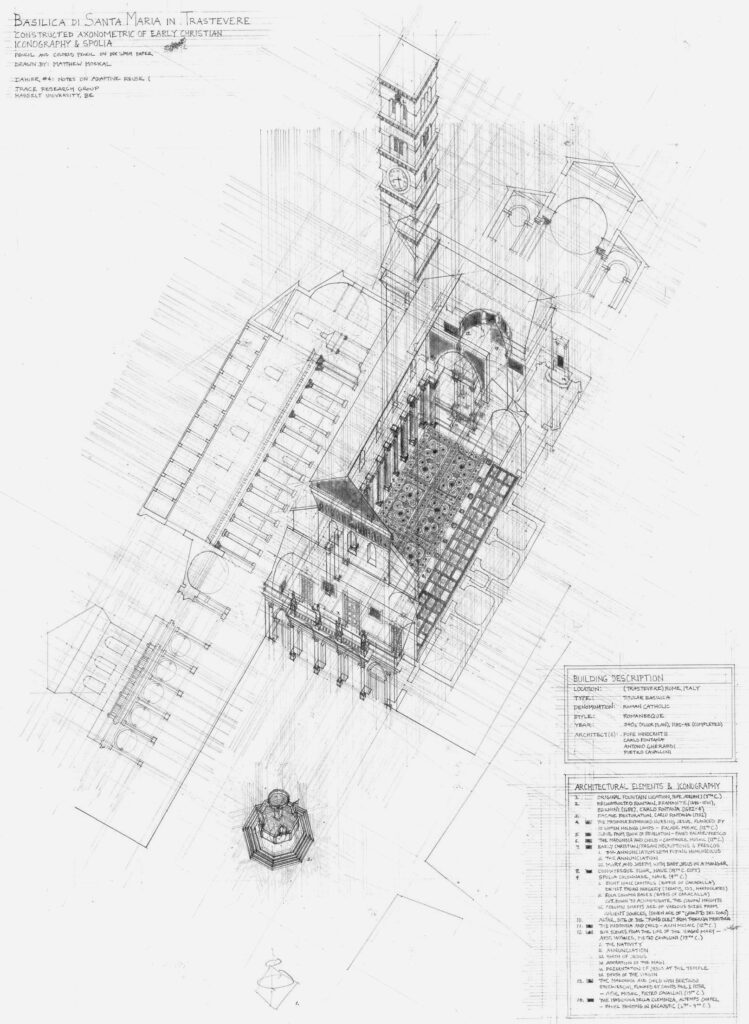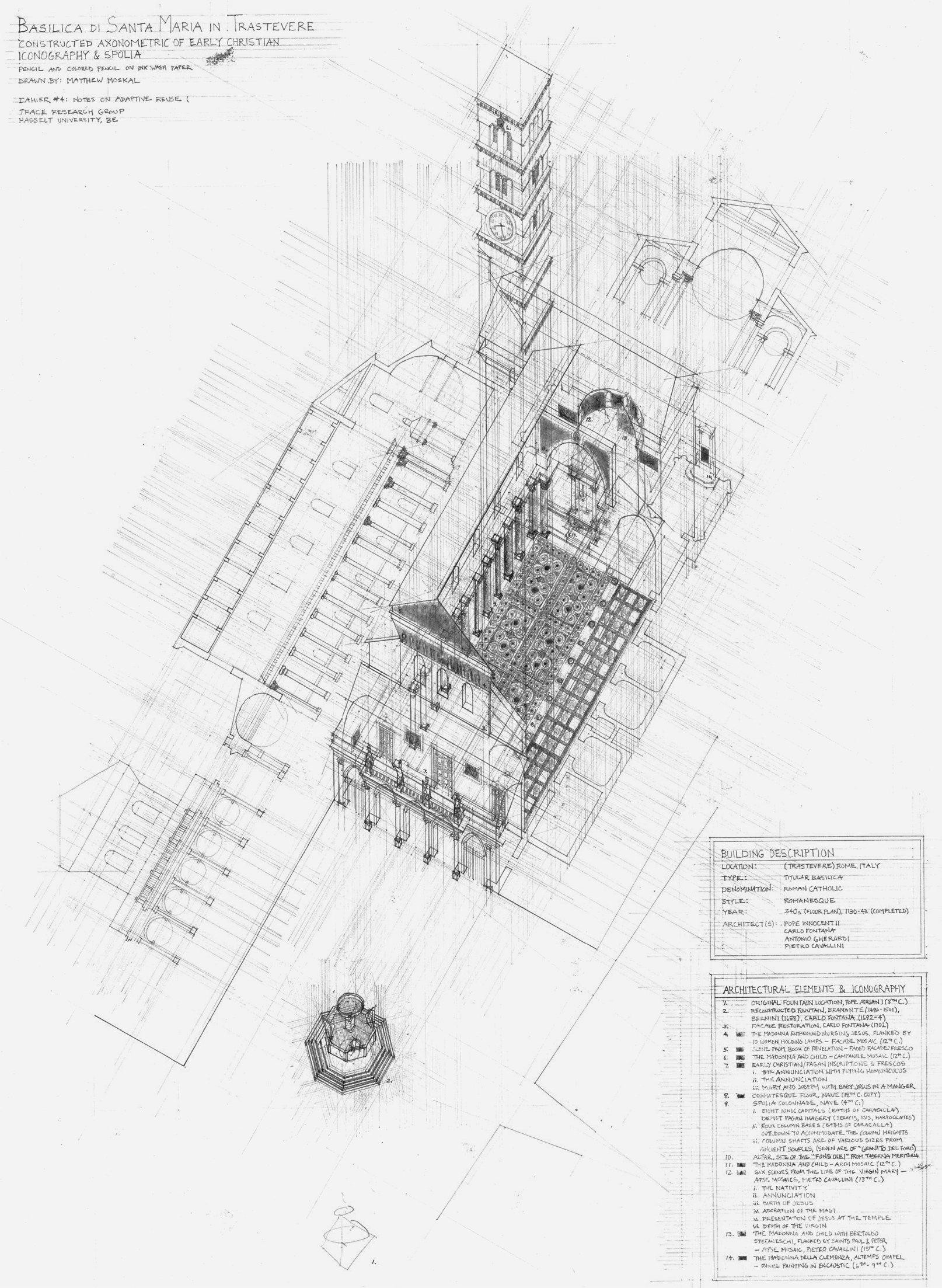
The cahier Trace – Notes on adaptive reuse is an annual peer-reviewed publication by the research group Trace and the International Master on Adaptive Reuse, part of the Faculty of Architecture and Arts at Hasselt University, Belgium. Trace has a focus on emerging practices of adaptive reuse in architecture and heritage, developing a theoretical framework from a designerly approach. Studying the historical context of a building or site, they identify and select specific traces – defined as bridges between past and present – of tangible and/or intangible (re)sources as anchors for the design process. Exploring the spatial potentialities and the poetics of the existing, they consider the transformation of buildings and sites from within.
The content of each cahier is based on a combination of a thematic approach with a reflection on some of the topics addressed in research and education. The texts are essayistic but follow the requirements of a peer-reviewed scientific journal. In addition to the annual volumes that are aligned with the academic years, we foresee the possibility of special issues that can be published to address a specific topic or project. The cahier Trace – Notes on adaptive reuse has an open-access policy. Besides a limited number of hard copies, each volume is also made available in pdf format from the website of the research group.
Cahier N°4 explores the multitude of meanings of places: a dynamic process with deep historical traces. Remodelling historical sites often entails interventions that change initial meanings and introduce new ones. Sometimes specific narratives and associations completely independent from their original programme, motif and use become part of sites. Rudolph Machado used the metaphor of a marked canvas to visualise this hermeneutic process: how the past becomes a package of sense-making – of built-up meaning to be accepted, maintained, transformed, suppressed or refused.
